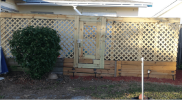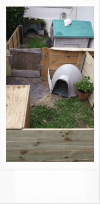Carl StarTortoise
New Member
Hi!
I’m planning to build an outdoor tortoise habitat and was curious if it’s safe to use cedar fence picket as the perimeter of the enclosure? It’s for baby radiated tortoises so it doesn’t need to be too strong.
Other options would be non pressure treated cedar 2”x8”boards, landscaping bricks, 1/2” PVC sheets cut to 8’ x 1’ pieces. The fencing would be by far the cheapest but I don’t want to use if not safe for my babies. Plan to make it 12’x8’ (they’re only 2-3” and will only be outside for 2-3 hours during days 80+).
-Colin
I’m planning to build an outdoor tortoise habitat and was curious if it’s safe to use cedar fence picket as the perimeter of the enclosure? It’s for baby radiated tortoises so it doesn’t need to be too strong.
Other options would be non pressure treated cedar 2”x8”boards, landscaping bricks, 1/2” PVC sheets cut to 8’ x 1’ pieces. The fencing would be by far the cheapest but I don’t want to use if not safe for my babies. Plan to make it 12’x8’ (they’re only 2-3” and will only be outside for 2-3 hours during days 80+).
-Colin

